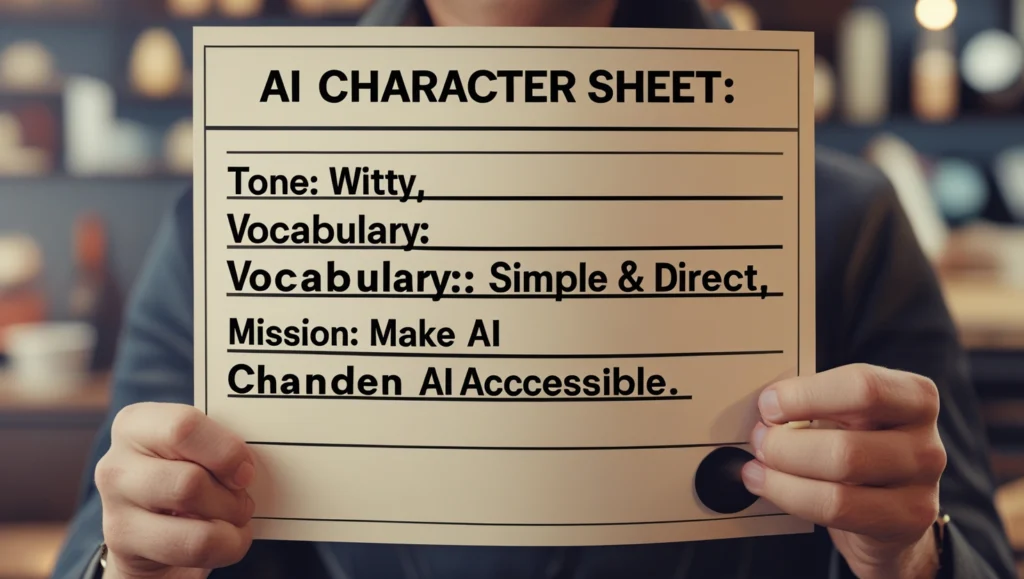5 Actionable Ways to Use AI for Content Creation Without Losing Quality
Achieving AI content creation without losing quality is the new benchmark for smart marketers and creators in 2025. While AI offers incredible speed, the real challenge is ensuring your output is authentic, valuable, and on-brand. If you’re looking to move beyond generic drafts, this guide provides 5 actionable strategies to elevate your AI-assisted content to the highest standard
Table of Contents
The Quality vs. Quantity Dilemma in the Age of AI
The promise of AI is creating a hundred articles in the time it used to take to write one. However, a hundred generic, low-quality articles will do more harm to your brand than one brilliant, human-refined piece. The goal is to build a system where AI accelerates your workflow while elevating, not diluting, your quality. Let’s explore how.
A Practical Framework for AI Content Creation Without Losing Quality
To solve this dilemma, you need a system. This isn’t about working harder; it’s about working smarter with your AI tools. The following five strategies provide a clear framework for AI content creation without losing quality, ensuring that your efficiency gains don’t come at the cost of your brand’s integrity.
5 Actionable Ways to Maintain Quality with AI
Way #1: The “Human-First” Briefing Method
Why Your Prompt is 90% of the Battle
The most common mistake is treating AI like a magic box. The quality of your output is almost entirely dependent on the quality of your input. A lazy, vague prompt will always result in lazy, vague content. A detailed, strategic brief is the foundation for high-quality AI content.
How to Create a “Master Brief” for Every Piece of Content
Before writing a prompt, write a one-page brief for yourself. It should include:
- The Core Message: What is the single most important idea you want the reader to take away?
- Target Audience Persona: Who are they, and what are their specific pain points?
- Desired Tone & Voice: Witty? Professional? Empathetic?
- Key Concepts to Include: List the essential sub-topics and keywords.
- Once you have this human-centric brief, you can then translate it into a detailed prompt for the AI.

Way #2: Using AI for “Component-Based” Creation
(H4) Stop Asking for Full Articles
Asking an AI to “write a 2000-word article” is an invitation for a generic, rambling piece. Instead, think like a builder assembling components. Use the AI for specific, targeted tasks.
How to Generate Outlines, Research, and Paragraphs Separately
Break down your process:
- Prompt 1 (Structure): “Generate a comprehensive article outline focused on [topic].”
- Prompt 2 (Research): “For the section ‘Why X is important,’ find 3 supporting statistics with sources.”
- Prompt 3 (Drafting): “Now, write a 300-word section for the point ‘Why X is important,’ using a [tone] and incorporating the statistics you found.”
- This granular approach gives you more control and results in a much higher quality final product. ‘A Step-by-Step Guide to Leveraging AI for Your Social Media Content’
Way #3: The “Inverted Editing” Workflow
From “Proofreading” to “Co-Writing”
The old way of editing was to check for typos at the end. The new AI content editing workflow inverts this. You are not a proofreader; you are a co-writer and director.
Editing for Voice, Tone, and Story First – Grammar Last
Read the AI’s first draft with these questions in mind:
- Does this sound like me/my brand?
- Is the story or argument compelling?
- Where can I inject a personal anecdote or a stronger opinion?
- Worry about humanizing AI-generated text and refining the core message first. The grammar is the easy part to fix later.

Way #4: Developing a Custom “Brand Voice” AI Persona
Beyond a Simple Instruction
Simply telling the AI to “be friendly” isn’t enough. To truly maintain brand voice with AI, you need to give it a detailed persona to embody.
How to Train Your AI on Your Own Writing Style
Create a “Brand Voice” document that you can paste into your prompts. Include:
- Who You Are: “You are ‘The Human Prompts’ guide, a friendly expert who makes AI simple.”
- Writing Style: “Use short sentences, conversational language, and ask rhetorical questions. You are witty but always helpful.”
- Words to Use/Avoid: “Use words like ‘practical,’ ‘strategy,’ ‘human.’ Avoid corporate jargon like ‘synergy’ or ‘leverage’.”
- Example Paragraph: Include a short paragraph of your own writing as a perfect example.

Way #5: Implementing a Rigorous Post-Generation Quality Checklist
Your Final Firewall Before Publishing
Before any AI-assisted content goes live, it must pass a final human-led quality check. This is non-negotiable.
Key Items: Fact-Checking, E-E-A-T Alignment, and Originality
- Fact-Checking: Verify every statistic, date, and name.
- E-E-A-T in Action: Does this content reflect genuine experience and subject-matter expertise? If not, where can you add it? Google’s E-E-A-T guidelines
- Originality: Does the core idea offer a fresh perspective, or is it a rehash of the top 10 search results?
- Plagiarism Check: Always run the final text through a plagiarism checker for peace of mind.

Conclusion: Quality Isn’t an Accident, It’s a Process
Using AI for content creation without losing quality requires a shift in mindset. You are not an operator pressing a button; you are a director guiding a powerful but unseasoned actor. By implementing these structured processes—from detailed briefs to inverted editing and rigorous checklists—you ensure that AI becomes a tool that amplifies your quality, not just your quantity.







One Comment